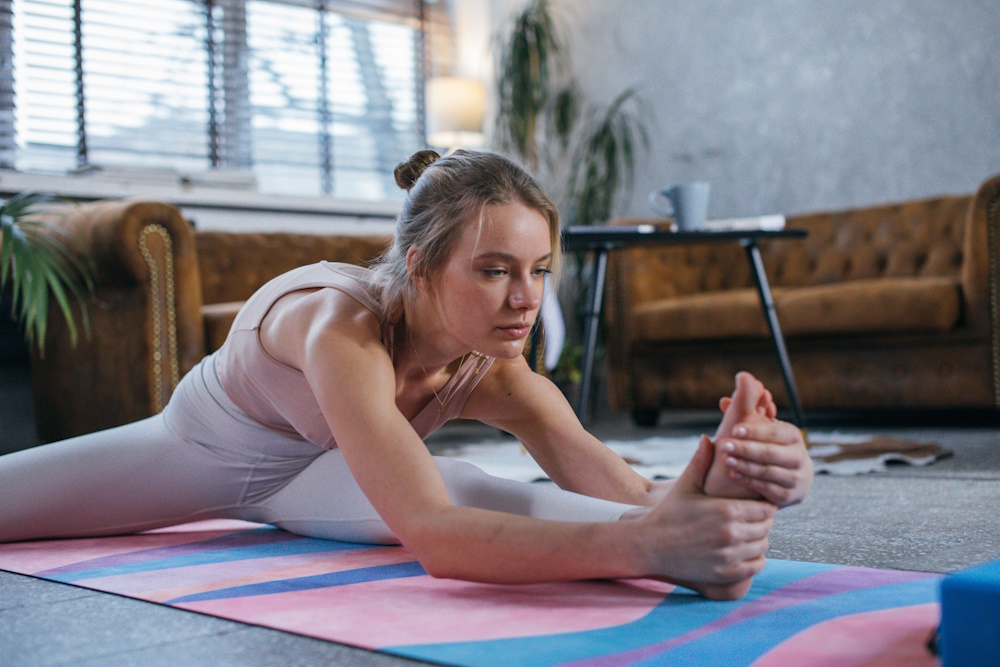Pilates is an excellent choice for cross-training. It complements other exercise routines by focusing on core strength, flexibility, and improved body awareness. Cross-training involves varying your workouts to prevent overuse injuries and improve overall fitness. Pilates, with its emphasis on core strength and stability, is a perfect addition to cross-training regimens. The controlled movements and emphasis on breath in Pilates can enhance your performance in other activities such as running, weightlifting, or CrossFit.
Cross-training helps to balance muscle groups, prevent burnout, and reduce the risk of injury. Pilates strengthens and stretches muscles, making it a great addition to high-impact activities. The low-impact nature of Pilates is particularly beneficial for those recovering from injuries or seeking a gentle introduction to exercise.
Pilates is known for its ability to improve posture and alignment. This is invaluable for athletes who require precise body movements in their respective sports. In essence, Pilates can serve as an excellent foundation for cross-training, aiding in overall fitness and performance enhancement.
What Is the Best Introduction to Pilates?
For those new to Pilates, a good introduction begins with understanding the core principles of this exercise system. These principles include concentration, control, centering, precision, breath, and flow. It’s crucial to start with an introductory class or sessions with a qualified instructor who can guide you through these principles.
Many people start with mat Pilates, which doesn’t require specialized equipment. It’s a convenient and cost-effective way to begin your Pilates journey. You can do mat Pilates at home or join a group class at a local studio. Beginner mat Pilates classes typically cover fundamental exercises that help you build a strong foundation.
However, if you have access to a Pilates studio, equipment-based Pilates using machines like the reformer or Cadillac can offer an excellent introduction. These machines provide resistance and support that can help you develop strength and flexibility more quickly. A trained instructor can tailor workouts to your individual needs, making equipment-based Pilates a highly effective way to start.
What I Wish I Knew Before Starting Pilates
Starting Pilates can be a rewarding experience, but there are a few things I wish I had known before beginning:
1. Patience is Key: Pilates may seem easy at first, but it’s deceptively challenging. Progress can be slow, so patience is essential. It may take time to see significant improvements in your strength and flexibility.
2. Consistency Matters: To reap the full benefits of Pilates, consistency in your practice is crucial. Aim for regular sessions rather than sporadic workouts.
3. Breathing Techniques: Pay attention to the breath. Proper breathing is an integral part of Pilates. It helps with movement control and enhances your mind-body connection.
4. Mind-Body Connection: Pilates is not just about physical strength; it’s about mental focus and body awareness. Being present in the moment during your practice is essential.
5. Variety in Workouts: Pilates offers a wide range of exercises, so don’t limit yourself to just one routine. Mix it up to keep things interesting and work different muscle groups.
6. Instructor Guidance: While mat Pilates is accessible to many, working with a certified Pilates instructor can help you avoid poor form and potential injury.
What Is Pilates and CrossFit?
Pilates and CrossFit are distinct exercise methods, each with its unique benefits. Pilates focuses on controlled movements, core strength, and flexibility, emphasizing quality over quantity. It’s low-impact and is excellent for enhancing body awareness and posture.
On the other hand, CrossFit is a high-intensity, constantly varied training program. It combines weightlifting, aerobic exercises, and high-intensity functional movements. CrossFit is known for its competitive and community-driven nature.
While Pilates and CrossFit might seem different, they can complement each other in a cross-training routine. Pilates can improve core strength and body control, which can benefit CrossFit athletes in maintaining good form during high-intensity workouts. Conversely, CrossFit’s cardiovascular and strength training can add variety to your fitness routine.
In summary, Pilates is an ideal choice for cross-training, offering core strength and flexibility benefits. The best introduction to Pilates involves understanding its core principles and seeking guidance from a qualified instructor. Before starting Pilates, remember to be patient, stay consistent, and focus on the mind-body connection. Pilates and CrossFit are distinct but can be complementary in a cross-training regimen. Integrating both can offer a well-rounded fitness experience, combining strength, flexibility, and cardiovascular conditioning.
